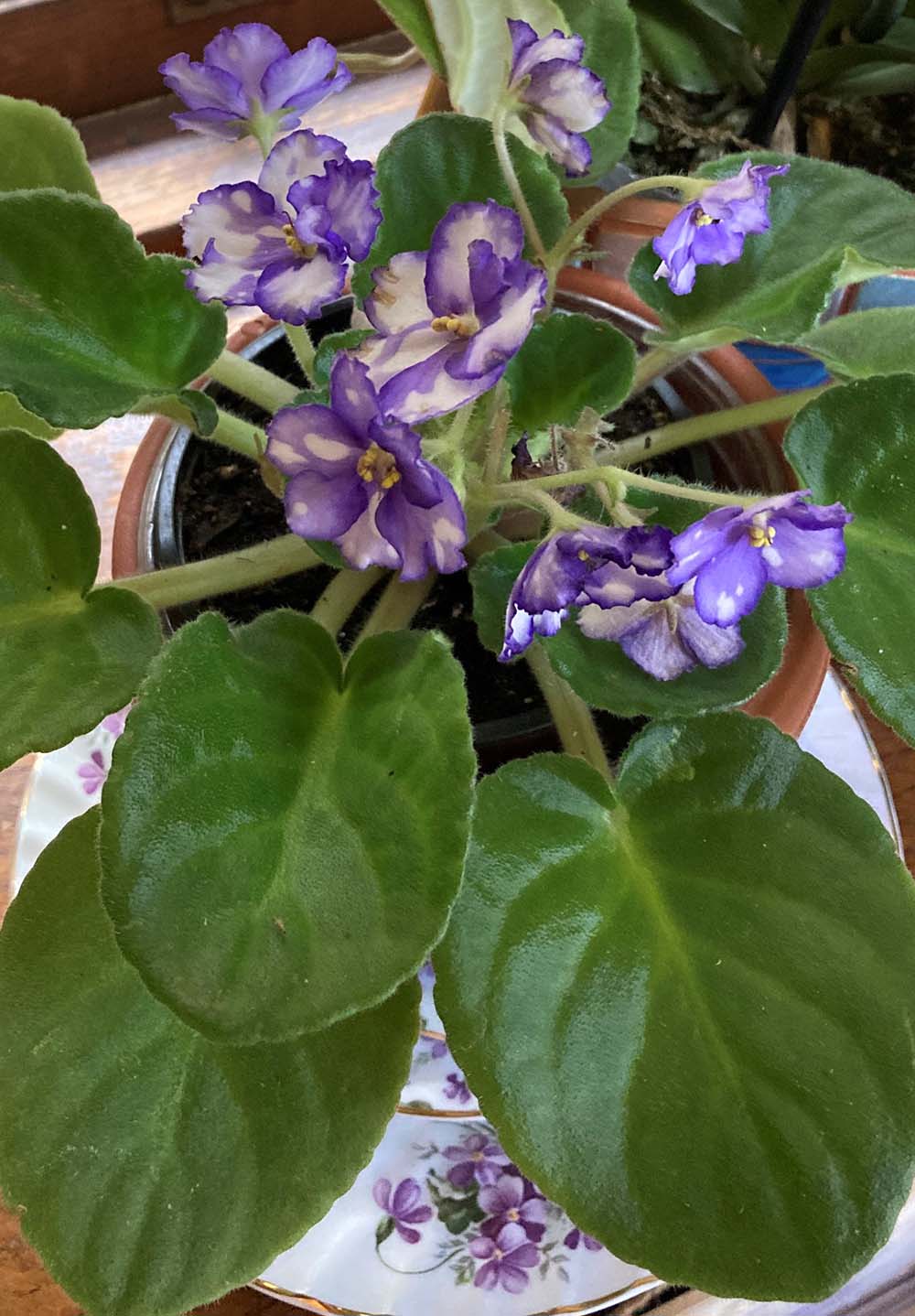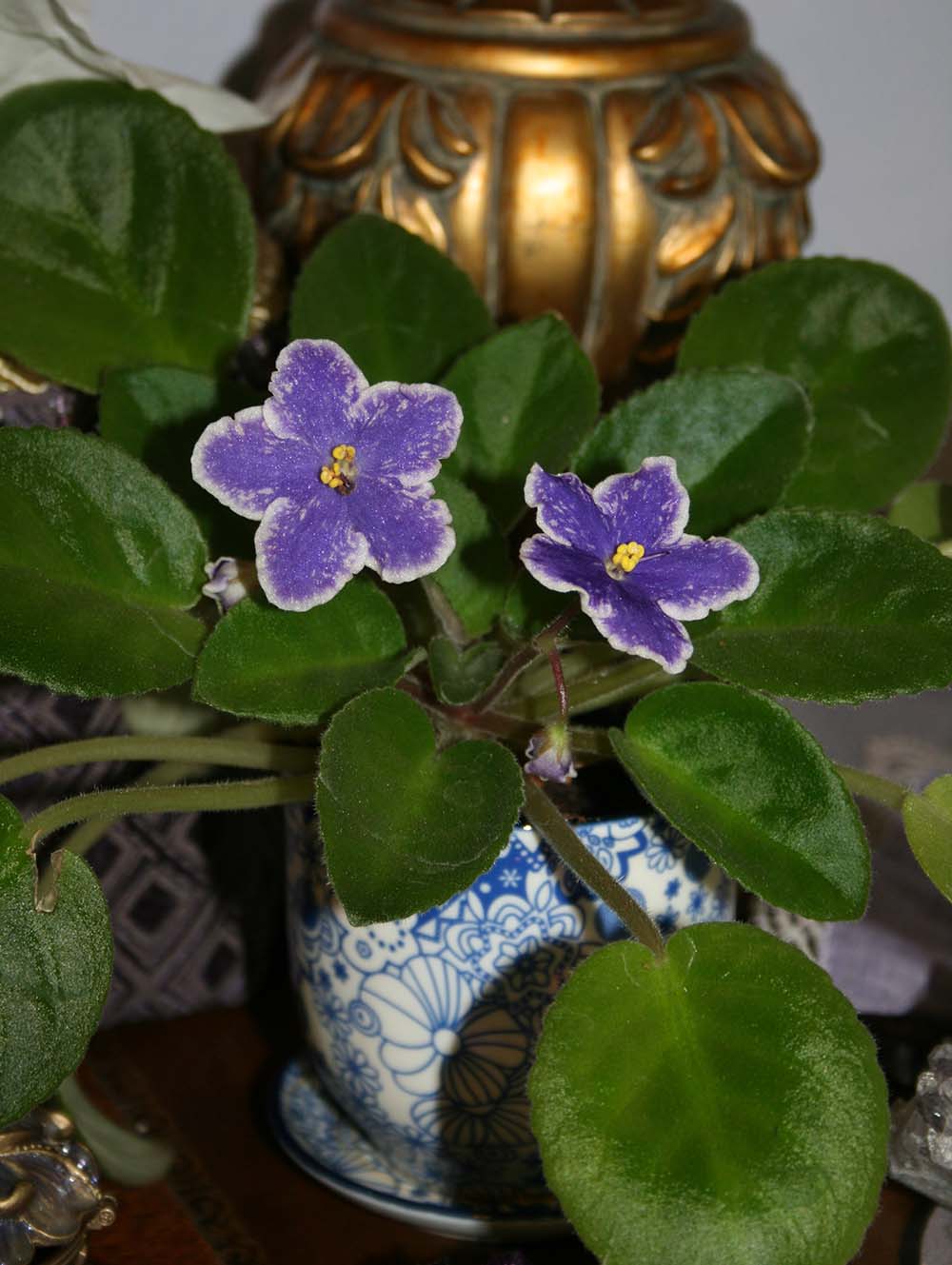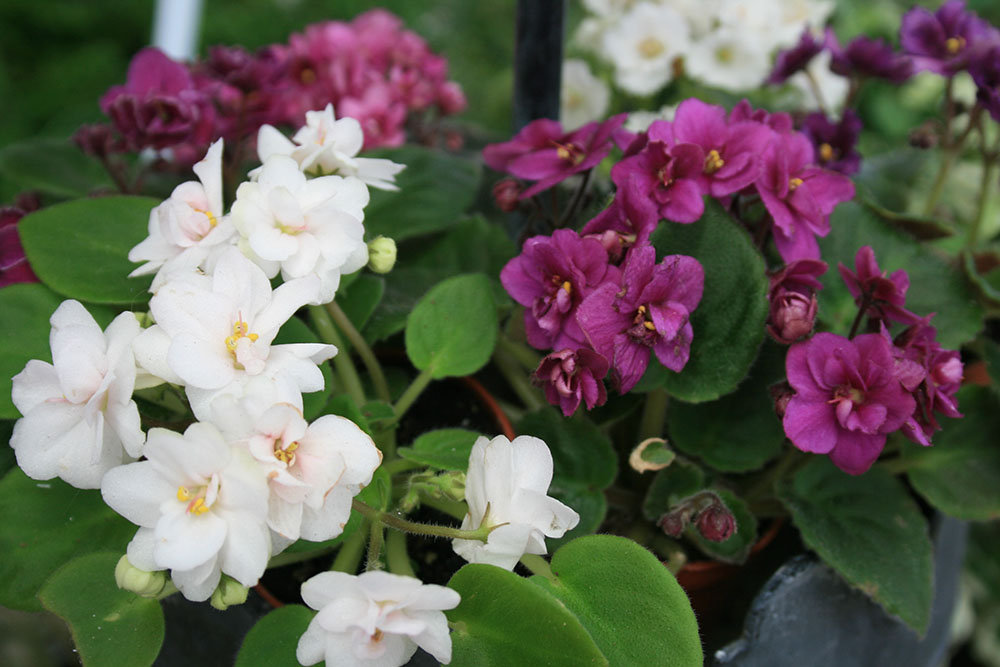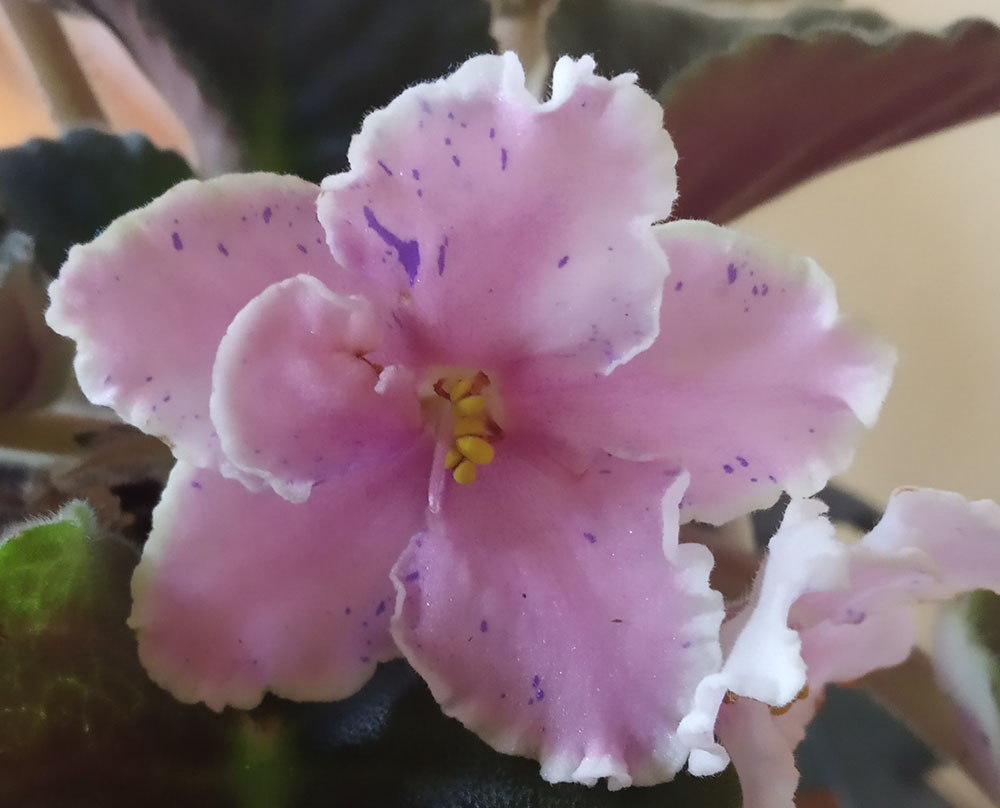Category: Plant Encyclopedia
African Violet
About African Violets
There are about 21 species and many cultivars of this fast-growing, low and mounding plant with colorful flowers that come in a variety of colors in clusters of single, semi-double, double and sometimes ruffled or fringed flowers.
Cultivation Requirements: Filtered light–bright Northern exposure is ideal. Rich, acidic, well-draining soil. Keep evenly moist. Fertilize every 2 months.
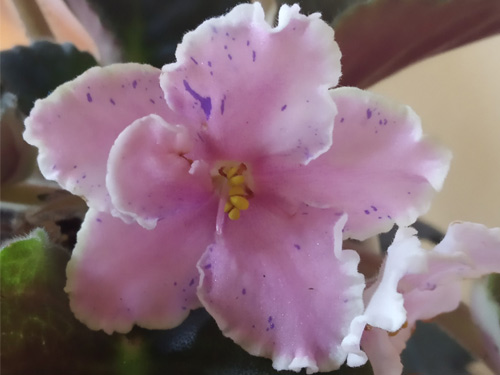
Of all indoor flowering plants, African violets (Saintpaulia ionantha) are some of the most stunning. The flowers come in a wide variety of colors, including pink, purple, white, cranberry, blue and variegated forms. Flowers are single, semi-double or double and can be scalloped, ruffled or fringed. The plant’s leaves are oval-shaped and slightly fuzzy.
Origin African Violets
East Africa
African violets are surprisingly easy to grow indoors. Follow these instructions, and you can have blooms throughout the year in your indoor garden.
Lighting African Violets
African violets prefer bright indirect light for 10 to 12 hours a day. They will bud up when placed in an unobstructed northern window. They also grow well under full-spectrum lighting. African violets also require 8 hours of darkness a day to flower well.
Watering African Violets
Keep African violets moist but not soggy. Avoid letting the soil dry out, as that will inhibit flowering. Water with warm to tepid water from the bottom. If you water from the top, avoid wetting foliage. African violets also do well in wick watering systems.
Video on how to create a wick watering system: Watch on Youtube
Fertilizing African Violets
Feed monthly with an organic fertilizer designed for African violets.
Repotting African Violets
Repot standard-sized African violets every 6 months and miniature African violets every 3 months. Use a rich, well-draining potting soil that retains moisture.
Humidity African Violets
African violets prefer 50 to 60 percent humidity. If you live in a dry climate, place African violets on humidity trays. You can also raise humidity by grouping plants, which will humidify each other.
Temperature African Violets
African violets prefer temperatures of 70 to 75 degrees F.
Pruning African Violets
Prune African violets when the plant becomes unbalanced. Pinch out older leaves to create a pleasing circular pattern.
Propagating African Violets
African violets are easy to propagate from leaf cuttings. You simply pinch off the leaf and insert the leaf stem into water. The leaf will grow roots and eventually tiny leaves will emerge, at which point you can plant the cutting in soil.Aluminum Plant
This fast-growing succulent perennial herb comes in a wide variety of leaf sizes, shapes, colors and textures. It can grow upright or trailing, depending on the type.
Anthurium
(Anthurium) species and hybrids
This plant may look exotic, but its fairly easy to grow indoors. Give it sufficient humidity and light and you’ll enjoy colorful flower-like stalks that come in shades of pink, red, orange and yellow.
Cultivation Requirements: Medium to bright light. Rich, well-draining soil. Water when soil surface dries. Fertilize monthly.
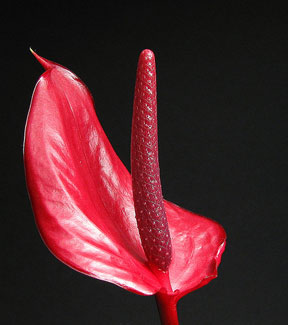
About African Violets
There are about 21 species and many cultivars of this fast-growing, low and mounding plant with colorful flowers that come in a variety of colors in clusters of single, semi-double, double and sometimes ruffled or fringed flowers.
Cultivation Requirements: Filtered light–bright Northern exposure is ideal. Rich, acidic, well-draining soil. Keep evenly moist. Fertilize every 2 months.

Of all indoor flowering plants, African violets (Saintpaulia ionantha) are some of the most stunning. The flowers come in a wide variety of colors, including pink, purple, white, cranberry, blue and variegated forms. Flowers are single, semi-double or double and can be scalloped, ruffled or fringed. The plant’s leaves are oval-shaped and slightly fuzzy.
Origin African Violets
East Africa
African violets are surprisingly easy to grow indoors. Follow these instructions, and you can have blooms throughout the year in your indoor garden.
Lighting African Violets
African violets prefer bright indirect light for 10 to 12 hours a day. They will bud up when placed in an unobstructed northern window. They also grow well under full-spectrum lighting. African violets also require 8 hours of darkness a day to flower well.
Watering African Violets
Keep African violets moist but not soggy. Avoid letting the soil dry out, as that will inhibit flowering. Water with warm to tepid water from the bottom. If you water from the top, avoid wetting foliage. African violets also do well in wick watering systems.
Video on how to create a wick watering system: Watch on Youtube
Fertilizing African Violets
Feed monthly with an organic fertilizer designed for African violets.
Repotting African Violets
Repot standard-sized African violets every 6 months and miniature African violets every 3 months. Use a rich, well-draining potting soil that retains moisture.
Humidity African Violets
African violets prefer 50 to 60 percent humidity. If you live in a dry climate, place African violets on humidity trays. You can also raise humidity by grouping plants, which will humidify each other.
Temperature African Violets
African violets prefer temperatures of 70 to 75 degrees F.
Pruning African Violets
Prune African violets when the plant becomes unbalanced. Pinch out older leaves to create a pleasing circular pattern.
Propagating African Violets
African violets are easy to propagate from leaf cuttings. You simply pinch off the leaf and insert the leaf stem into water. The leaf will grow roots and eventually tiny leaves will emerge, at which point you can plant the cutting in soil.Arrowhead Vine
Arrowhead Vine (Syngonium podophyllum)
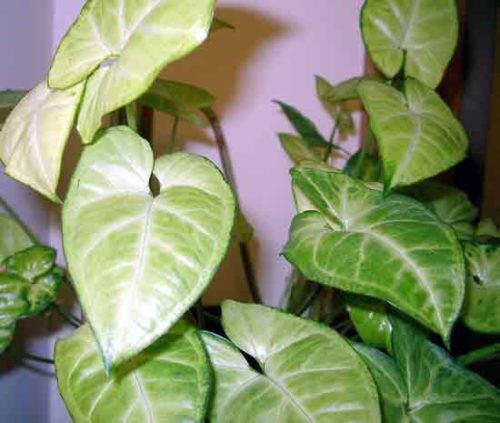
Bird Of Paradise
This fast-growing plant gives a tropical look to the indoor garden. Once mature, plants will provide intermittent, colorful blooms throughout the year.
Blood Leaf Plant
There are many cultivars of this mounding or trailing plant, which tends to have waxy purple, red and yellow variegated leaves. Provides interesting color to the indoor garden.




